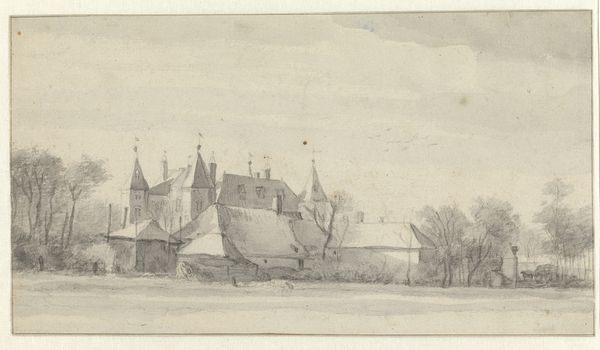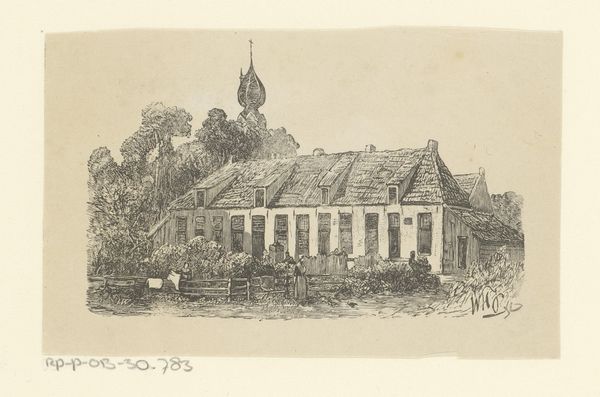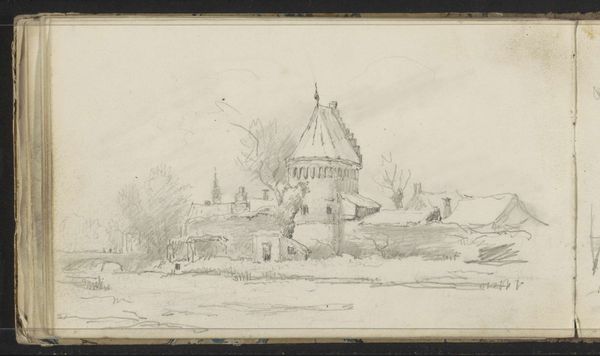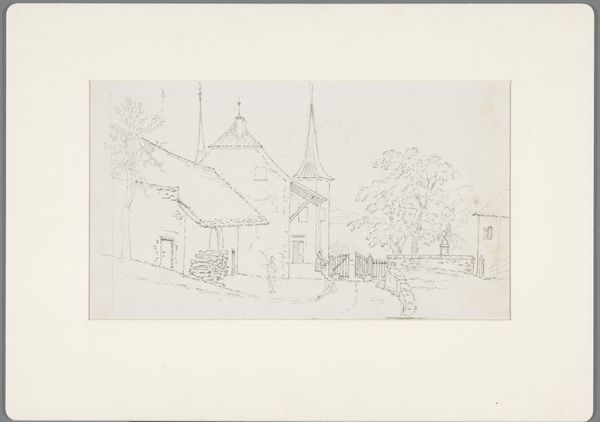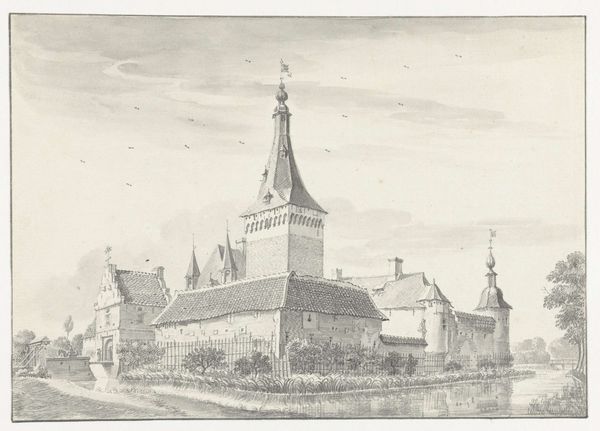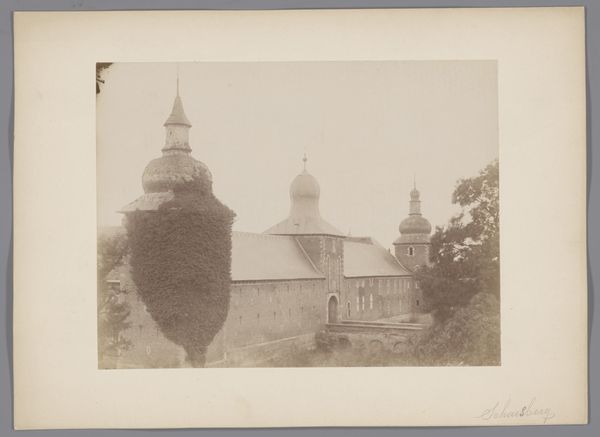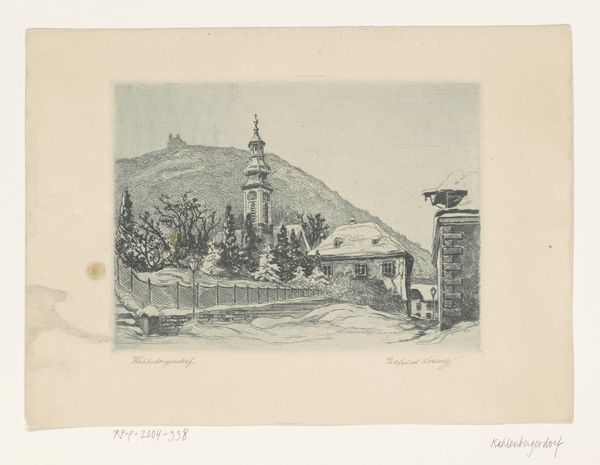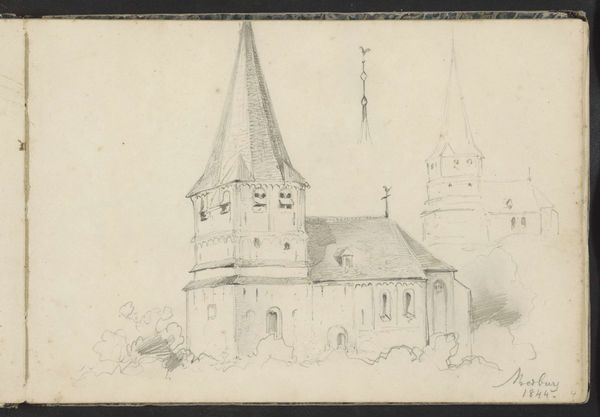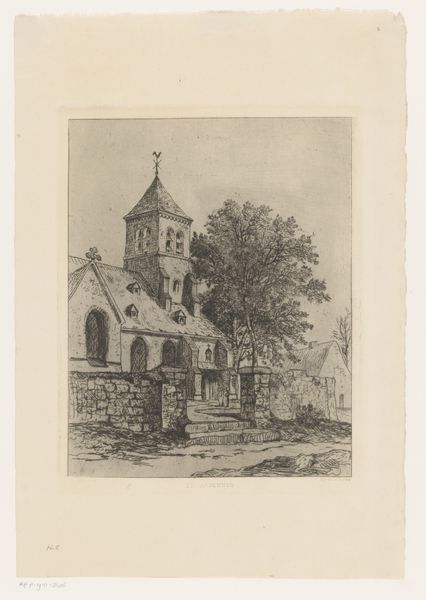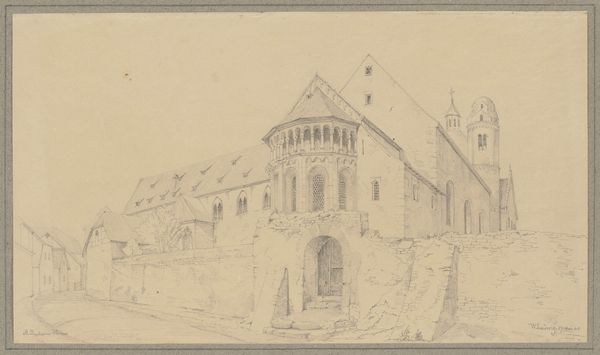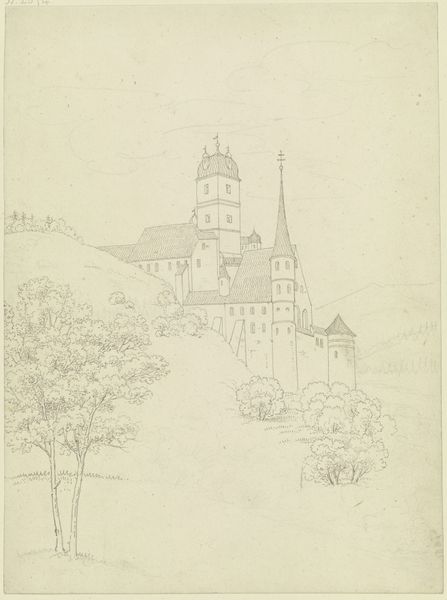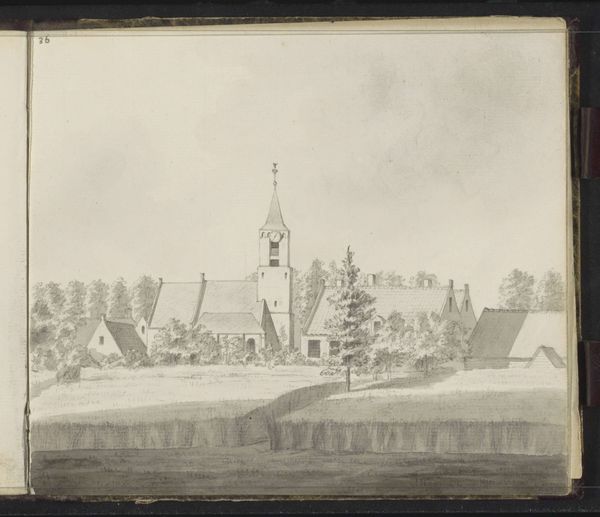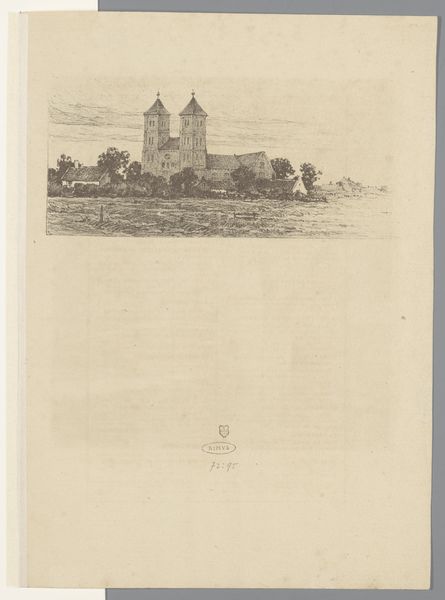
Tiroler Dorfkiche und die sie umgebenen Häuser mit Aussicht auf die Alpen
0:00
0:00
drawing, paper, watercolor, architecture
#
drawing
#
16_19th-century
#
landscape
#
paper
#
watercolor
#
watercolour illustration
#
architecture
Copyright: Public Domain
Curator: This delicate drawing captures a Tyrolean village church, complete with surrounding houses and a breathtaking view of the Alps. It's rendered in watercolor on paper by Karl Ballenberger. Editor: My first impression is one of tranquility. The muted palette and careful linework create a sense of serene, almost reverential stillness. The buildings appear humble against the backdrop of the mountains. Curator: The church as the central subject suggests a narrative deeply intertwined with the community. Consider its role: spiritual hub, community center, a physical representation of shared identity in this mountainous landscape. It's interesting how the Alps, though majestic, are rendered almost as background. Editor: Yes, they’re faint, ethereal almost. For me, it's the artist’s meticulous attention to detail in the architectural elements that stands out. Look at the tiled roofs and timber details rendered with such precision. It speaks of craftsmanship, not just artistic skill. And consider how watercolor on paper itself becomes part of the narrative; both are humble materials. Curator: True, watercolor, often considered less prestigious than oil, serves this subject matter perfectly. The landscape and vernacular architecture captured are made accessible, not overly romanticized. Perhaps there's even a democratic aspect in the choice of material. Editor: I agree. And thinking of the physical process, the layered washes of color, the fine lines built up slowly… there’s a quiet labor involved. You can imagine Ballenberger carefully studying each roof tile, each window. I'm intrigued by his method, revealing not just observation but deep consideration for his craft. Curator: His methodical technique may reveal a social dynamic within artistic circles as well; there were many artists at the time grappling with what art should look like, and whom art should depict. The landscape here can be viewed as an everyman’s scene of respite, of belonging, within a vast landscape. Editor: Looking again, the church spire reaching upward juxtaposes with the horizontality of the mountain range. It subtly emphasizes the interplay between the built environment and natural surroundings, each grounding and complementing the other, but done with the simple application of watercolor, showing how intentional materials can also add to the cultural context of the artwork. Curator: Absolutely. It's fascinating to see how a seemingly simple landscape drawing can reveal so much about culture, technique, and the human experience of place. Editor: Indeed. It is a beautiful reminder that art is always as much about process and place as it is about what's depicted on the surface.
Comments
No comments
Be the first to comment and join the conversation on the ultimate creative platform.
